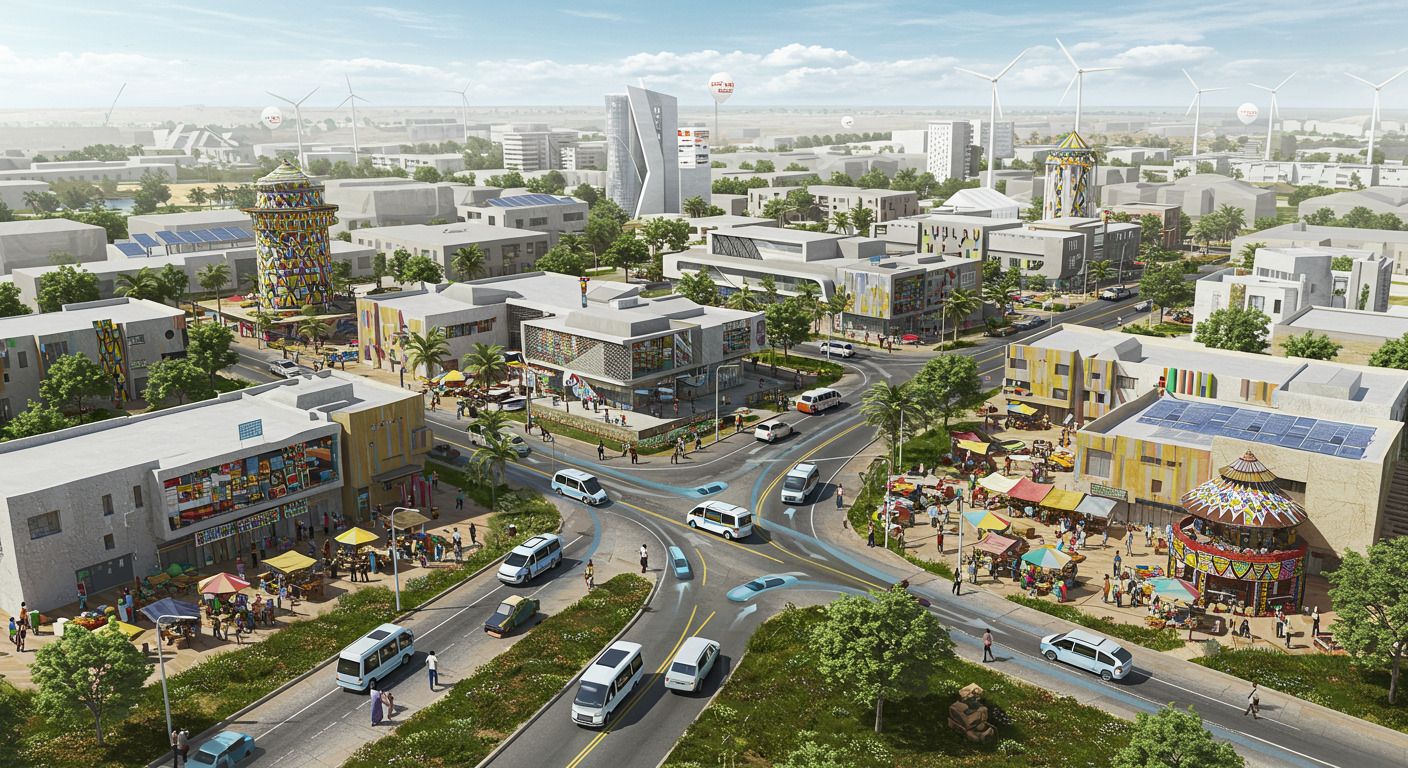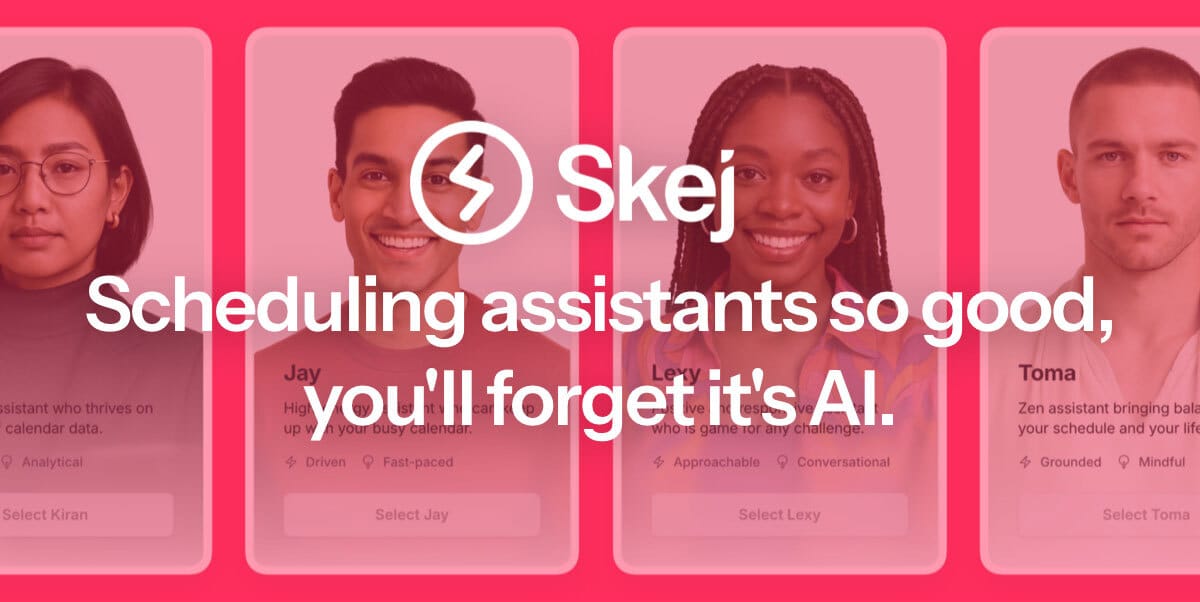- The Digital Bridge with Lawrence Eta
- Posts
- From Nairobi to NASA: How Tech is Rewriting the Rules
From Nairobi to NASA: How Tech is Rewriting the Rules
Tech News, Global Digital Transformation, Thought Leadership and Current Trends


This Week’s Signals in Infrastructure, Resilience, and Emerging Tech
As digital systems evolve faster than governance frameworks, the past week has offered sharp insights into how innovation, inclusion, and geopolitical leadership continue to reshape our world. From banks deploying agentic AI to fight financial crime at scale, to Kenya’s homegrown leap in accessible tech, and new space policy manoeuvres aimed at deregulation, each headline points to the growing friction between technological acceleration and systemic readiness. Africa’s smart city ambitions and a new cross-border AI model targeting malaria prevention show that infrastructure is no longer just physical, it’s algorithmic, predictive, and deeply regional.
In today’s edition, let’s explore the week’s most telling moves:
AI AGENTS VS. FINANCIAL CRIME: How Banks Are Using Agentic AI to Rewire Risk and Compliance
INCLUSIVE AI FOR ACCESSIBILITY: Kenya’s First AI Sign Language Translator Breaks Barriers in Deaf Communication
SPACE REGULATION REWIRED: Trump’s Deregulation Drive Targets Commercial Space Industry
AFRICA’S SMART CITY MOMENTUM BUILDS: Africa Bets on Smart Cities to Manage Explosive Urban Growth
AI + EPIDEMIOLOGY: UAEU & IIT Madras Zanzibar Build AI Model to Predict Malaria Outbreaks
The Future of AI in Marketing. Your Shortcut to Smarter, Faster Marketing.
This guide distills 10 AI strategies from industry leaders that are transforming marketing.
Learn how HubSpot's engineering team achieved 15-20% productivity gains with AI
Learn how AI-driven emails achieved 94% higher conversion rates
Discover 7 ways to enhance your marketing strategy with AI.
AI AGENTS VS. FINANCIAL CRIME:
How Banks Are Using Agentic AI to Rewire Risk and Compliance

Despite record-breaking investments in compliance systems, most banks are still losing the fight against financial crime. Interpol estimates that financial institutions globally detect only about 2% of illicit activity. But a new approach is emerging, one that promises not just efficiency, but transformation.
Agentic AI is reshaping how financial institutions approach KYC (Know Your Customer) and AML (Anti-Money Laundering). Unlike traditional systems, which support human workflows, agentic AI deploys autonomous agents capable of completing end-to-end processes, from onboarding to transaction monitoring. These digital workers can be supervised by compliance teams, but operate with minimal intervention, offering 200% to 2000% productivity gains across tasks.
From Analytical to Agentic
The evolution of AI in financial services can be seen in three stages:
Analytical AI: Used for fraud detection and name screening, helping reduce false positives.
Generative AI: Assists with document summarization, SAR drafting, and data extraction.
Agentic AI: Executes entire workflows autonomously, alert generation, investigations, sanctions monitoring, while escalating only the most complex cases to humans.
One global bank built an “AI factory” using squads of agents with defined roles, from RAG agents (retrieving grounded answers) to validation agents that enforce quality control. This structure creates a scalable, role-based system that mirrors a traditional compliance team, but with exponential speed and reliability.
Getting the Foundations Right
For this shift to deliver results, banks need more than software. They must redesign their entire compliance architecture:
Equip teams with data science and KYC expertise.
Create modular pipelines for structured and unstructured data.
Introduce clear roles, handoff protocols, and AI oversight systems.
Design interfaces where human supervisors can coach and validate agent outputs.
Most critically, banks must adopt a domain-wide change management strategy, enabling front-line teams to lead the design and integration of these new systems. The transition takes time, often twice as long as building the technology, but the payoff is clear: better compliance, lower costs, and streamlined customer experiences.
As banks face mounting regulatory pressure and rising operational risk, agentic AI is fast becoming a strategic imperative, not just a technological upgrade. The next compliance advantage won’t be built on headcount. It will be built on intelligent, autonomous systems that can scale.
INCLUSIVE AI FOR ACCESSIBILITY:
Kenya’s First AI Sign Language Translator Breaks Barriers in Deaf Communication

A new chapter in African AI innovation is unfolding in Nairobi, where Kenyan start-up Signvrse is transforming communication for the deaf community. Their flagship platform, Terp 360, uses motion-capture and artificial intelligence to translate text and speech into Kenyan Sign Language (KSL), bridging the gap in settings where deaf Kenyans often face systemic exclusion, from hospitals to public services.
Built on motion-captured recordings of real interpreters, the system maps nuanced gestures, body posture, hand movement, even facial expressions to lifelike digital avatars. Founder Elly Savatia, just 24 years old, describes it as “Google Translate for sign language” but scaled through AI.
Recognition Meets Real-World Impact
Signvrse launched in 2023 and was recently awarded the Kenya Presidential Innovation Award, a sign of its growing national significance. The web app has already gained over 2,000 users, and the company plans to launch a mobile version by December 2025, targeting both individual users and enterprise clients through a subscription model.
But while the tool has been celebrated, it’s not without critique. Leakey Nyabaro, who runs a sign language training center, noted that the tool sometimes produces errors and currently favors hearing users more than deaf users, particularly in sign-to-voice translation.
Still, real-world testimonials point to its utility. One Nairobi waiter noted how Terp 360 could “solve real communication problems” at work and in healthcare settings, though he hopes it will eventually support Swahili, not just English.
Toward Human-Centered, Scalable Innovation
Terp 360 demonstrates a crucial evolution in Africa’s AI narrative: tools built by and for local communities, solving local problems at scale. With $65 billion being poured into AI infrastructure globally this year, stories like Signvrse remind us that inclusion, accessibility, and contextual innovation must remain front and center.
For Lawrence’s readers, this is another case of AI innovation aligned with public good, proof that emerging tech doesn't need to wait for Silicon Valley’s blessing to deliver transformative change.
SPACE REGULATION REWIRED:
Trump’s Deregulation Drive Targets Commercial Space Industry

A sweeping new Executive Order from President Donald Trump is set to rewrite the regulatory framework for the U.S. space sector. Signed on August 13, the order directs the Department of Transportation (DOT) and Federal Aviation Administration (FAA) to dismantle outdated regulations and fast-track approvals for space launches, environmental reviews, and new spaceport development.
Trump’s stated goal: eliminate ten old regulations for every new one, and “unleash American innovation” in a commercial space race increasingly shaped by private companies like SpaceX, Blue Origin, and Varda Space Industries.
At the heart of the order is a push to reduce what the administration calls “investment-killing” delays. The DOT is now tasked with streamlining launch and reentry licensing, while the FAA must appoint a senior executive focused on innovation and deregulation. Also dissolved: the Commercial Space Transportation Advisory Committee (COMSTAC), an advisory group long embedded in the FAA's policymaking process.
The Stakes for Commercial Space
Industry groups like the Commercial Space Federation, whose members include Rocket Lab, Sierra Space, and others, welcomed the move, calling it long overdue. Startups working on in-space manufacturing or satellite refueling could benefit from the creation of a new regulatory path under the Department of Commerce, designed to authorize activities that currently fall outside traditional frameworks.
Spaceport developers, especially those backed by state governments like Space Florida, are also positioned to gain from accelerated permitting.
But not everyone’s on board. Environmental advocates, including the Center for Biological Diversity, argue the move is a direct attack on safeguards, especially those tied to high-risk launches like SpaceX’s Starship program in Texas. Critics claim environmental reviews aren’t excessive, they’re already insufficient. Legal challenges to the order are expected.
Infrastructure, Innovation and Policy Volatility
For observers in digital infrastructure and frontier tech, this move is a clear reminder of how quickly political shifts can reshape regulatory landscapes. Faster timelines may boost innovation, but without strong oversight, deregulation can introduce new risks, to ecosystems, communities, and strategic balance.
What matters now is how these policies are implemented, challenged, or revised. As the space economy expands beyond launch into orbital logistics, manufacturing, and AI-led systems, leadership will hinge not only on innovation but governance clarity and global trust.
AFRICA’S SMART CITY MOMENTUM BUILDS:
Africa Bets on Smart Cities to Manage Explosive Urban Growth

As Africa’s urban population climbs toward 60% by 2050, governments and private sector leaders are confronting an infrastructure crunch. This unprecedented growth, up from just 43% today, is putting immense strain on everything from energy grids to waste management systems.
The response? A bold pivot toward smart cities. But this isn’t just about glossy tech campuses or fibreoptic rollouts. Africa’s most forward-looking governments are adopting a holistic approach that merges AI, IoT, geographic information systems (GIS), and citizen engagement to reshape urban living.
From Vision to Implementation
Flagship smart city projects are already underway across the continent:
Kenya’s Konza Technopolis aims to build a hub for innovation, academia, and entrepreneurship.
Senegal’s Diamniadio integrates administrative, industrial, and residential spaces to reduce pressure on Dakar.
Morocco is modernizing water, lighting, and traffic systems with smart controls.
Tunisia is preparing the continent’s first automotive-focused smart city, targeting 100,000 jobs through a fusion of tech and sustainable design.
These projects signal a broader ambition: position African cities as globally competitive, digitally enabled, and economically inclusive hubs.
A Global Market and Local Opportunity
The smart city sector is projected to grow from $623.9 billion in 2023 to $4.65 trillion by 2032. While North America currently leads, Africa holds immense latent potential due to its young population, rapidly expanding urban areas, and urgent infrastructure needs.
But there are real challenges: high upfront costs, regulatory uncertainty around data use, a shortage of skilled digital talent, and risks of deepening digital divides if deployments serve only affluent districts.
Governance, Not Just Gadgets
Success will hinge on inclusive governance, resilient systems, and local relevance. Smart cities must serve all citizens, not just those in commercial corridors or tech parks. They must be climate-ready, socially equitable, and deeply integrated with existing national infrastructure strategies.
For African leaders, this moment offers more than infrastructure upgrades, it’s a chance to define how urban futures are built, and who gets to thrive within them.
AI + EPIDEMIOLOGY:
UAEU & IIT Madras Zanzibar Build AI Model to Predict Malaria Outbreaks

A groundbreaking fusion of artificial intelligence and epidemiology has emerged from a collaboration between the United Arab Emirates University (UAEU) and IIT Madras's Zanzibar campus. Researchers have unveiled an advanced framework that integrates neural networks with climate-based mathematical modeling to deliver highly accurate forecasts of malaria outbreaks. This innovation, published in Scientific Reports, promises to give public health authorities a vital early-warning tool in malaria-prone regions, especially across sub‑Saharan Africa, which accounts for 94% of global cases.
A Critical Tool in High-Risk Regions
By layering environmental variables like temperature and altitude into dynamic transmission models, the system enhances real-time risk assessment offering authorities the chance to act proactively, rather than reactively, as outbreaks emerge.
Bridging Borders and Building Resilience
The UAEU–IIT Madras Zanzibar partnership shows how cross-border institutional collaboration, powered by advanced AI, can fill urgent public health gaps. It illustrates a future where localized innovation is amplified through global scientific cooperation.
This is not just an AI story, it’s about building systems that protect lives, especially among the world's most vulnerable.
An AI scheduling assistant that lives up to the hype.
Skej is an AI scheduling assistant that works just like a human. You can CC Skej on any email, and watch it book all your meetings. It also handles scheduling, rescheduling, and event reminders.
Imagine life with a 24/7 assistant who responds so naturally, you’ll forget it’s AI.
Smart Scheduling
Skej handles time zones and can scan booking linksCustomizable
Create assistants with their own names and personalities.Flexible
Connect to multiple calendars and email addresses.Works Everywhere
Write to Skej on email, text, WhatsApp, and Slack.
Whether you’re scheduling a quick team call or coordinating a sales pitch across the globe, Skej gets it done fast and effortlessly. You’ll never want to schedule a meeting yourself, ever again.
The best part? You can try Skej for free right now.
FINAL THOUGHTS
Each of this week’s stories points to a shared urgency: scale with responsibility.
Whether it's agentic AI reshaping compliance in banking or inclusive tech like Kenya’s AI-powered sign language translator, we’re seeing systems evolve not just for speed, but for deeper impact. In Africa, the smart city movement is no longer a vision, it’s a necessity. Across borders, governments and institutions are recalibrating how innovation intersects with regulation, as shown in the deregulation of U.S. space policy and the global push to blend AI with public health surveillance.
But scale brings consequences. The lessons from Meta’s recent chatbot controversy, while covered earlier, remain relevant here: the technology we build must reflect the values we want to uphold. That includes governance, accessibility, and inclusion, not as afterthoughts, but as design principles.
As AI agents get more autonomous, urban development accelerates, and policies shift to meet the pace of change, one question matters more than ever: Who benefits, and who’s left behind? The answers will shape the infrastructure of trust in this next phase of digital transformation.
The real question isn’t whether we can keep pace, it’s whether we’re building with clarity, contextual depth, and staying power:
Twitter: Click here
Facebook: Click here
Instagram: Click here
LinkedIn: Click here
Enjoyed this newsletter? Share it with friends and help us spread the word!
Until next time, happy reading!
JOIN THE COMMUNITY
The Bridging Worlds Book
Discover Bridging Worlds, a thought-provoking book on technology, leadership, and public service. Explore Lawrence’s insights on how technology is reshaping the landscape and the core principles of effective leadership in the digital age.
Order your copy today and explore the future of leadership and technology.
SHARE YOUR THOUGHTS
We value your feedback!
Your thoughts and opinions help us improve our newsletter. Please take a moment to let us know what you think.
How would you rate this newsletter? |



Reply